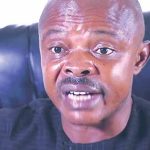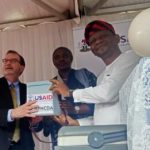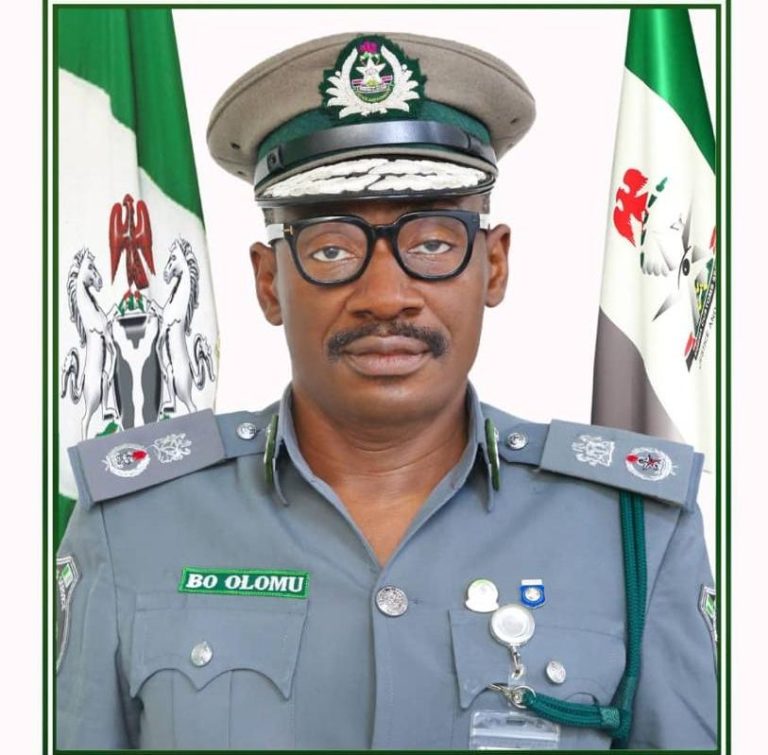The Customs Area Controller of Apapa Area Command, Comptroller Babatunde Olomu, said the command has deployed the use of scanning machines as part of effort
to seal revenue loopholes and improve revenue generation.
Olomu, while expressing optimism that the command would achieve its 2024 revenue target of N2.3trillion, said the use of scanning machines was a veritable tool in achieving the target among other strategies.
He said scanning machines were used side by side physical inspection where necessary, to facilitate trade, while also detecting duty evasion attempts by traders.
Olomu said it had been globally acknowledged that most people evade taxes unless compelled to do so adding that the command would do everything to prevent such attempts.
“Under Comptroller Olomu’s leadership, the command has applied certain tactics to enhance revenue collection and efficiency, building upon the successes of his predecessor.
“These efforts have strengthened the command’s position as a flagship unit of the Nigeria Customs Service.
“To achieve the target, the command has set proactive monthly, weekly and daily revenue targets of N193 billion, N44 billion, and N8.9 billion respectively.
“In the first quarter of 2024, the command surpassed its target with a collection of N489 billion. In April, it generated N182 billion, and in May, N175 billion was collected.”
The controller said, although there was a slight drop in revenue collection in May, he was confident that the command would be able to generate N200 billion in June as a result of the interventions in place.
He said the command would continue to ensure that appropriate taxes were paid to government, while continuing to implement interventions to seal loopholes and prevent revenue leakages.
On concerns that officers could influence scanning processes, the controller said containers were randomly selected for scanning, making it impossible for officers to influence the process.
He said the diligence of officers in checking declarations and consignments using non-intrusive technology (scanning) and physical examinations had made non-compliant traders uncomfortable.
He added that “some of the traders resort to blackmail and other tactics to compromise and dampen the morale of officers.
“However, the officers are loyal in carrying out their duties.
“As the command raises queries on suspicious consignments, compliant traders have no reason to fear, as the command prioritizes not just revenue generation but also trade facilitation.”
On why physical inspection was sometimes used alongside scanning machines, Olomu said,
“One thing to note about the issue of delay is part of our SOP.
“There are limitations the scanners have.There are things the scanners can do and cannot do.
“We have made this known to the general public. Even the stakeholders are aware.
“Firstly, the scanners cannot classify items.It can only reveal what those items are and what we deal with is imagery.
“We don’t deal with pictorial image to describe or interpret those consignments.”
He further said, “there are certain items, particularly items like chemical that can fall under their regulations that will require EUC.
“They could have some kind of radioactive materials in them that would require repositioning to see the material physically instead of just seeing them image wise.
“Such consignments are the consignments I think the agents are complaining about and we need to check.
“Sometimes, we have heterogenous items.
“When you have heterogeneous items mixed up with other items that can be classified differently from what the original items are, we will subject them to physical check even if the description suits the analysis.
“There are instances when doing the documentation, there are things that might not likely fit in with where we are trying to place the heading to be able to maximize the collection of revenue.
“In such circumstances, those containers would be subjected to physical check but not in all cases.
“It is just on random and few occasions on those ones we feel that have not given us a correct description.
“Such containers are alerted either by valuation or query requiring a detailed information about that container.”
He also said, “scanning has an SOP. You book, scan, the analyst analyses.
“The analysts are not robots, they are humans and they are bound to make certain mistakes.
“They can demand for physical check .It is still within the process of scanning until finally validated and released. That is where the processes ends.
“As far as you lodge your consignments, until it goes out of customs processes,the container can be determined clear enough.”
Olomu explained that passing the preliminary stage of scanning and analysing does not deem a cargo fit for release, adding that, “it is an operational issue that is subject to review as time goes on.
On the need to hasten cargo delivery, decongest port terminals, and reduce gridlock on the port access road, Olomu said, the command had intensified engagements with barge operators and terminal operators in partnership with other area commands in the corridor.
According to him, the collaboration will help to convey cargoes on the water, adding that it was faster than transporting them on the roads.
.









